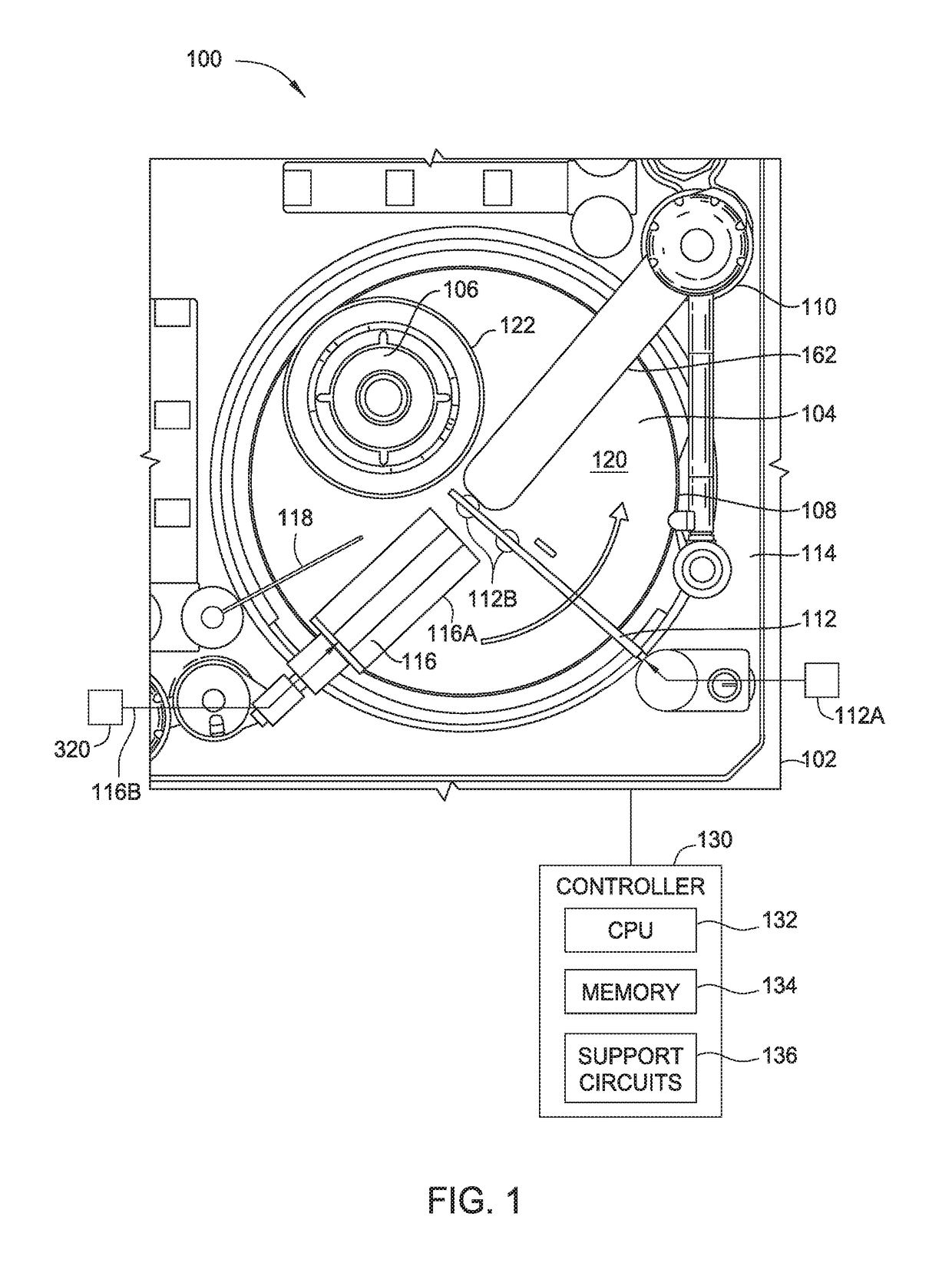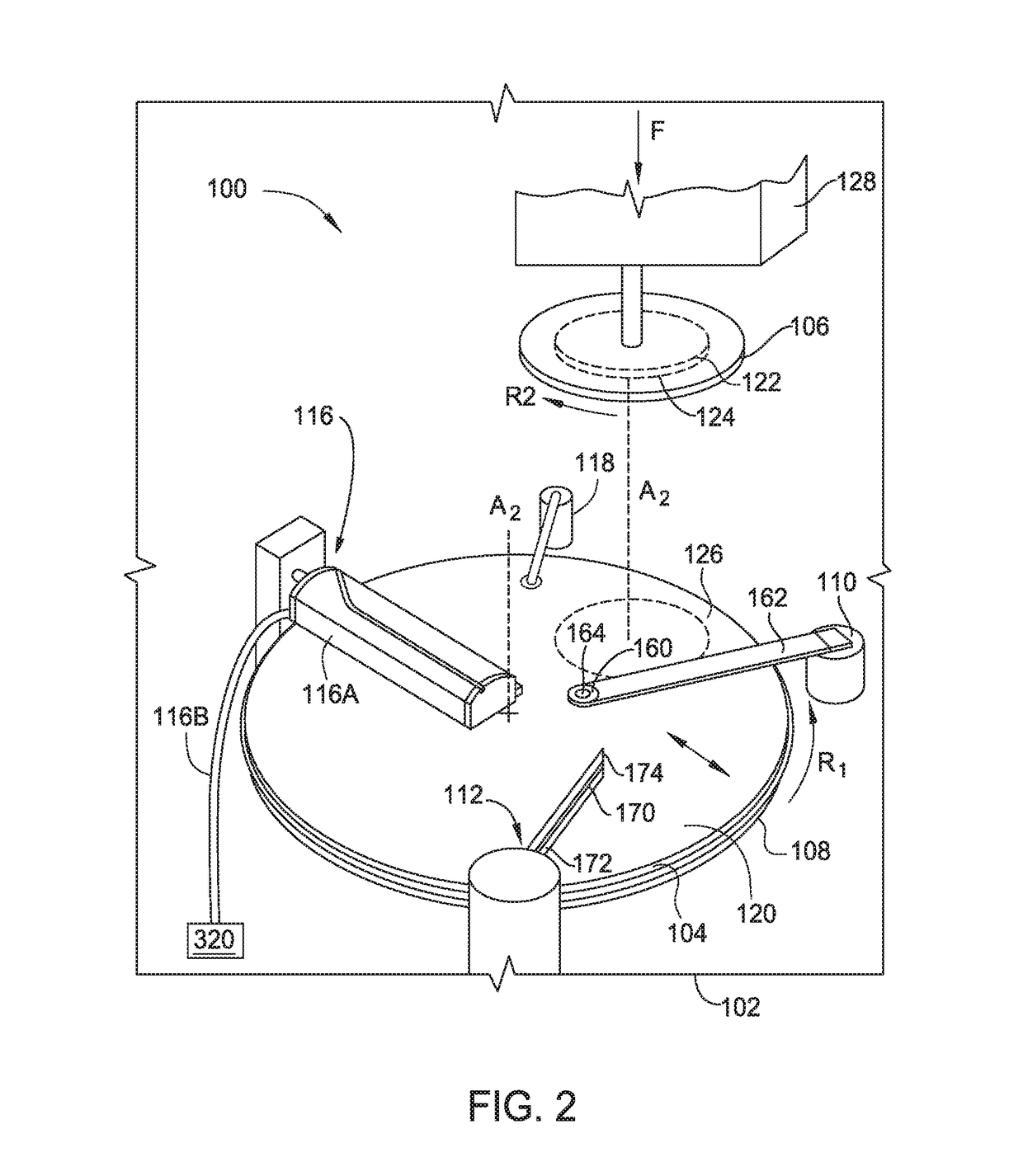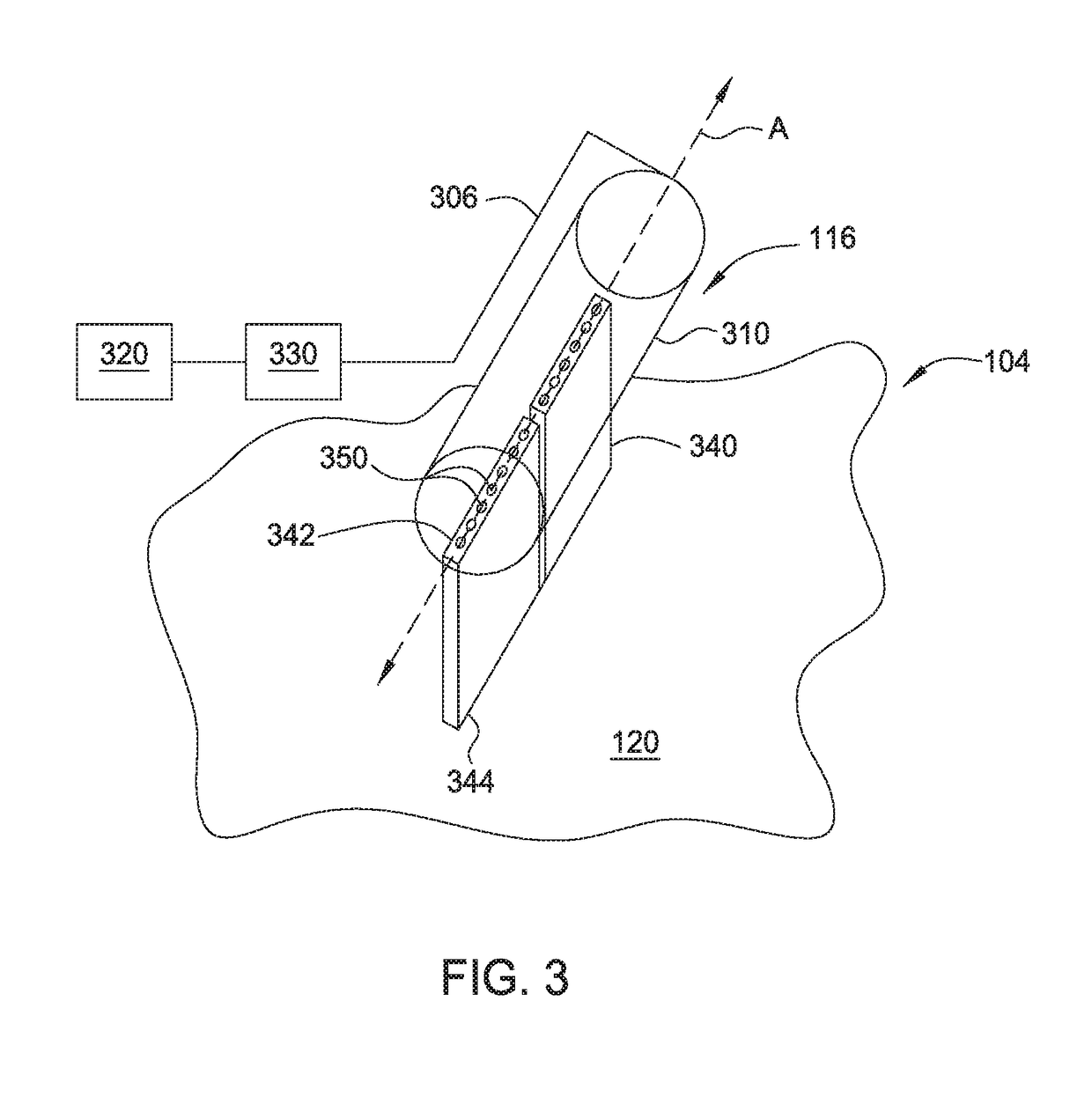In-situ temperature control during chemical mechanical polishing with a condensed gas
a technology of condensed gas and polishing process, which is applied in the direction of manufacturing tools, abrasive surface conditioning devices, lapping machines, etc., can solve the problems of poor topography and within die planarization, and increase the temperature of the substrate during the polishing process
- Summary
- Abstract
- Description
- Claims
- Application Information
AI Technical Summary
Benefits of technology
Problems solved by technology
Method used
Image
Examples
Embodiment Construction
[0018]Implementations of the present disclosure generally relate to planarization of surfaces on substrates and on layers formed on substrates, including an apparatus for in-situ temperature control during polishing, and methods of using the same. More specifically, implementations of the present disclosure relate to in-situ temperature control with a condensed gas during a chemical-mechanical polishing (CMP) process. Certain details are set forth in the following description and in FIGS. 1-4 to provide a thorough understanding of various implementations of the disclosure. Other details describing well-known structures and systems often associated with substrate polishing and temperature control using condensed gases are not set forth in the following disclosure to avoid unnecessarily obscuring the description of the various implementations.
[0019]Many of the details, dimensions, angles and other features shown in the Figures are merely illustrative of particular implementations. Acc...
PUM
| Property | Measurement | Unit |
|---|---|---|
| temperature | aaaaa | aaaaa |
| temperature | aaaaa | aaaaa |
| temperature | aaaaa | aaaaa |
Abstract
Description
Claims
Application Information
 Login to View More
Login to View More - R&D
- Intellectual Property
- Life Sciences
- Materials
- Tech Scout
- Unparalleled Data Quality
- Higher Quality Content
- 60% Fewer Hallucinations
Browse by: Latest US Patents, China's latest patents, Technical Efficacy Thesaurus, Application Domain, Technology Topic, Popular Technical Reports.
© 2025 PatSnap. All rights reserved.Legal|Privacy policy|Modern Slavery Act Transparency Statement|Sitemap|About US| Contact US: help@patsnap.com



